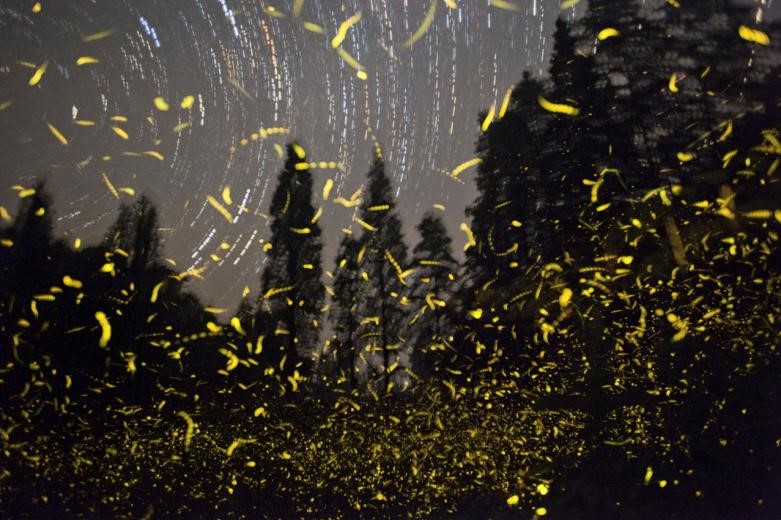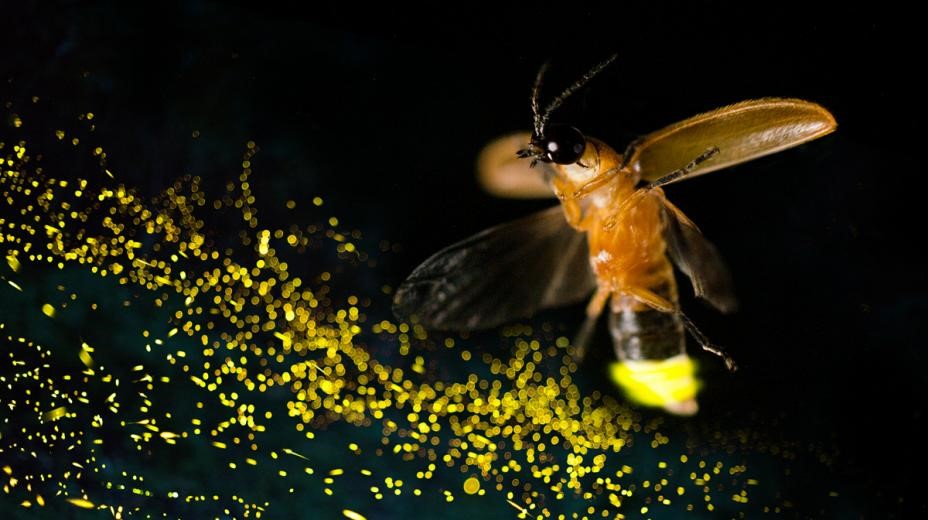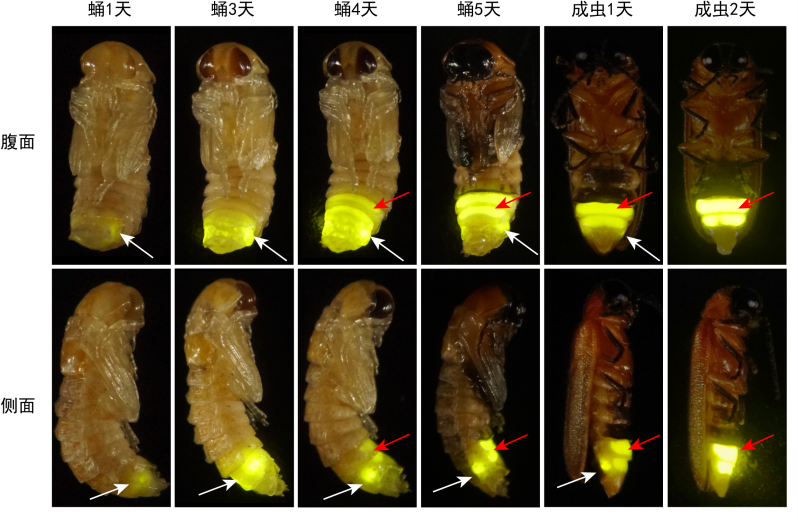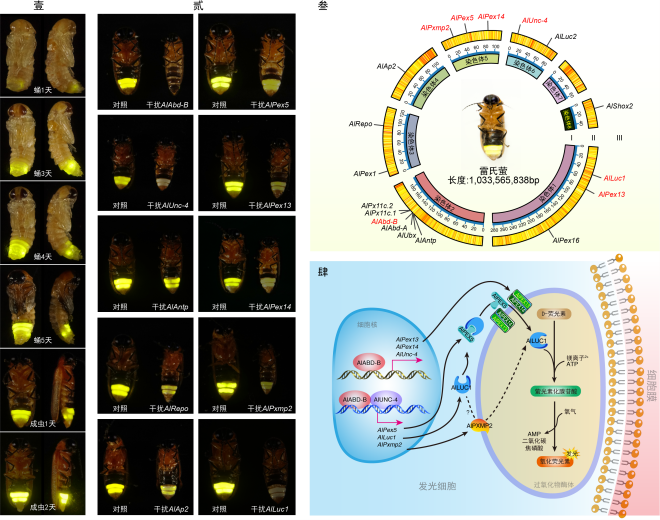
Stars shine with fireflies(Photo/Fu’s team)
In Chinese traditional culture, there are many ancient anecdotes about fireflies that have been passed down through the ages. Throughout history, fireflies, like fairies illuminating the night sky, have carried people’s cherished memories of idyllic rural life. However, why do fireflies emit light? And how do they control their luminescence? These two questions have long puzzled the scientific community.

A flashing male Aquatica leii in its courtship play(Photo/Fu’s team)
Recently, Professor Fu Xinhua and his research team from HZAU published a genetic research paper in the academic journal Nature Communications, unveiling the mystery of firefly bioluminescence.

The development and luminescence of firefly’s light organ within 5-7 days during the pupal stage(Photo/Fu’s team)
The luminescence of fireflies’ is a biochemical reaction, resulting in cold light generated through an efficient biochemical process involving luciferase, luciferin, oxygen, magnesium ions, and adenosine triphosphate. “The development mechanism and flash control mechanism of the light organ in adult fireflies are the two most fundamental and challenging issues in firefly research,” explained Professor Fu. Throughout, scientists have focused their research on luciferase and luciferin, which forms the cornerstone of firefly studies.

The silent key transcription factors AlAbd-B or AlUnc-4 would both result in fireflies unable to emit light (Photo/Fu’team)
In 2018, Fu’s team, employing techniques such as comparative genomics, comparative transcriptomics, and gene interference, conducted research on the early, middle, and late luminescent organs of a unique aquatic firefly species exclusive to China. Following this study, they identified the “homeobox transcription factors.” These are a category of developmental regulatory genes governing animal morphology, comprising nearly a hundred genes, including two crucial transcription factors, “AlAbd-B” and “AlUnc-4.” These factors interact to initiate and regulate the expression of luciferase, the luminescent protein. The loss of function in either transcription factor results in fireflies failing to emit light.
The study also revealed that at the cellular level, the luminescence of fireflies relies on the action of luciferase within the organelle called the peroxisome. Luciferase, typically abundant in the cytoplasm, needs the assistance of peroxisomal transmembrane transport proteins to enter the peroxisome. AlAbd-B and AlUnc-4 are precisely the transcription factors that regulate these peroxisomal transmembrane transport proteins, facilitating the transportation of luciferase protein.

The “firefly galaxy” flows above the grassland (Photo/Fu’s team)
Fu expressed that the shape and frequency of luminescent organs vary among each species of firefly, displaying species specificity, which reflects the biodiversity of fireflies. Therefore, understanding the luminescence mechanism of adult fireflies is of significant importance in the conservation of their biodiversity.
Source: https://news.hzau.edu.cn/2024/0308/69141.shtml
Translated by: He Qiuyan
Supervised by: Hu Miao
Proofread by: Guo Haiyan